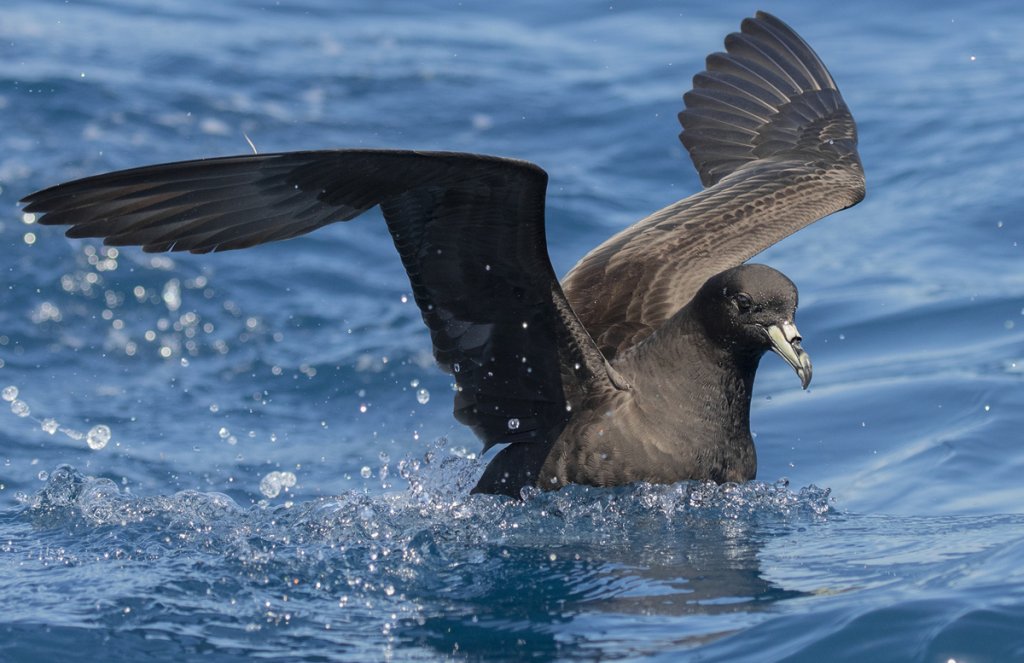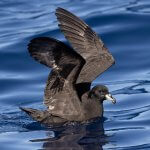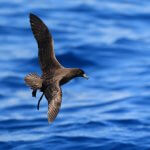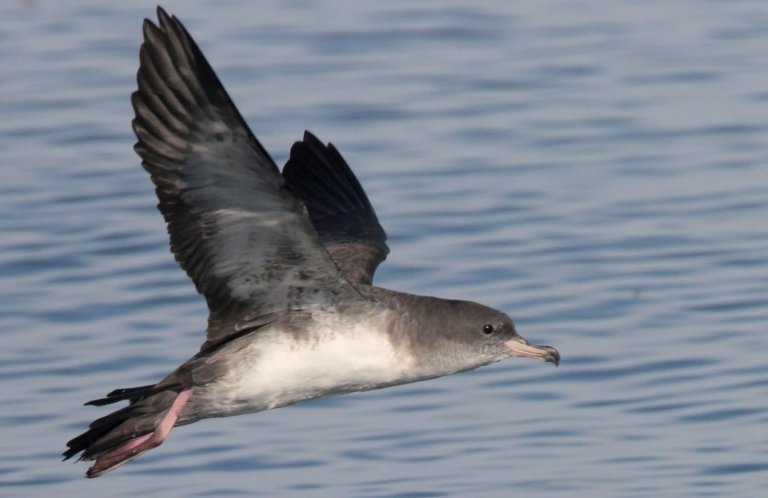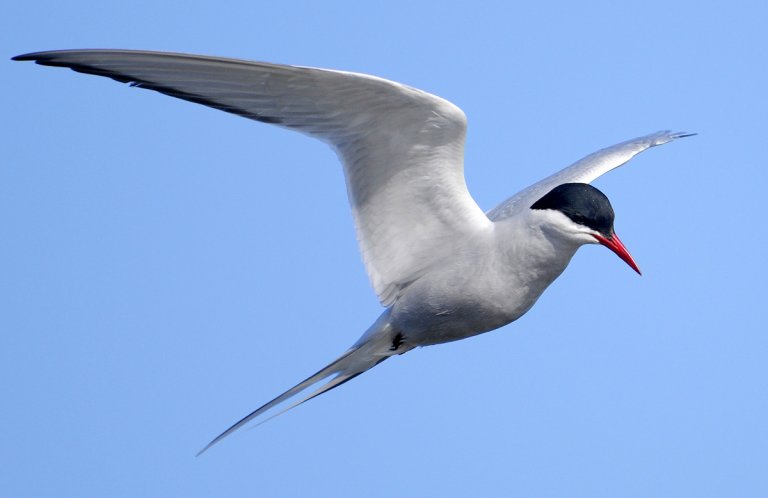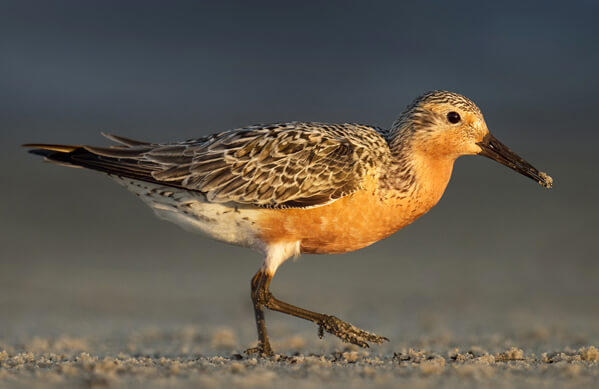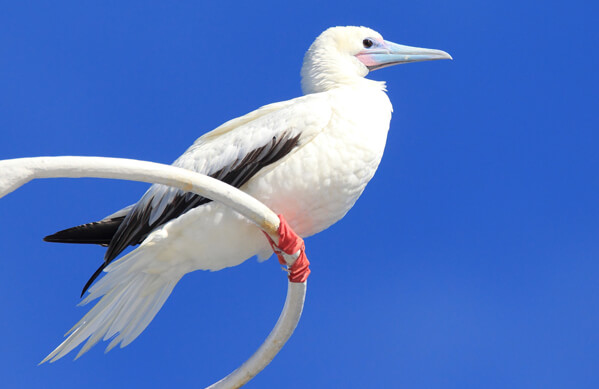About the Parkinson's Petrel
The Parkinson's Petrel is named for Scottish natural history artist Sydney Parkinson, who accompanied Captain Cook on his first voyages to the Pacific in the mid-1700s. This species is also known as the tāiko by the Māori people of New Zealand, where it breeds. Another of its names, Black Petrel, aptly describes this all-dark seabird, whose only spot of color is its pale-yellow bill with a dark tip. The smallest member of its genus, the Parkinson's Petrel is about the size of a Pink-footed Shearwater.
This seabird makes an epic ocean crossing twice each year.
Epic Voyages
The Parkinson's Petrel makes a lengthy voyage across the Pacific Ocean each year, flying approximately 14,000 miles round-trip between its breeding islands off New Zealand and its wintering areas at sea off the west coast of South America. Although not as long a journey as the Arctic Tern's annual 50,000-mile trek, the Parkinson's Petrel's migration is comparable to the long-distance travels of species such as the Red Knot and Sanderling.
Songs and Sounds
The Parkinson's Petrel is generally silent while at sea, but vocal at its colony at night during the breeding season. Males make a loud, clacking call to attract females to their burrows. Listen to this call here.
Breeding and Feeding
Like many seabirds ranging from the Bonin Petrel to the Wedge-tailed Shearwater, the Parkinson's Petrel nests in colonies. It forms monogamous pairs which usually remain together over multiple years. To avoid the attentions of larger, more aggressive seabirds and predators, the Parkinson's Petrel visits its breeding colony after dark and departs before dawn, or remains in its burrow during the day.
A mated pair digs a nesting burrow of up to 10 feet long, but may also nest in a natural cavity among tree roots or in a hollow log. There, the female Parkinson's Petrel lays a single white egg, which both partners take turns incubating in stints of 8-17 days for almost two months. Their chick hatches covered in black down and is fed by both parents through regurgitation until it fledges, usually after 3-4 months.
After the breeding season is over, adults and their newly-fledged young migrate to the South American coast for the winter. Juveniles remain at sea in the central and eastern Pacific for approximately 4 years, then travel back to the breeding grounds to seek a mate, beginning to breed at 5-7 years old.
Whale-Watchers
The Parkinson's Petrel forages alone or in groups of up to several hundred birds, capturing its prey by surface feeding and shallow dives. It feeds mainly on squid, supplemented by fish, crustaceans, and marine invertebrates.

Like the Red-footed Booby, the Parkinson's Petrel often follows dolphins and whales to feed on the shoals of fish these marine mammals drive towards the surface. This seabird also follows fishing vessels for chum and scraps.
Region and Range
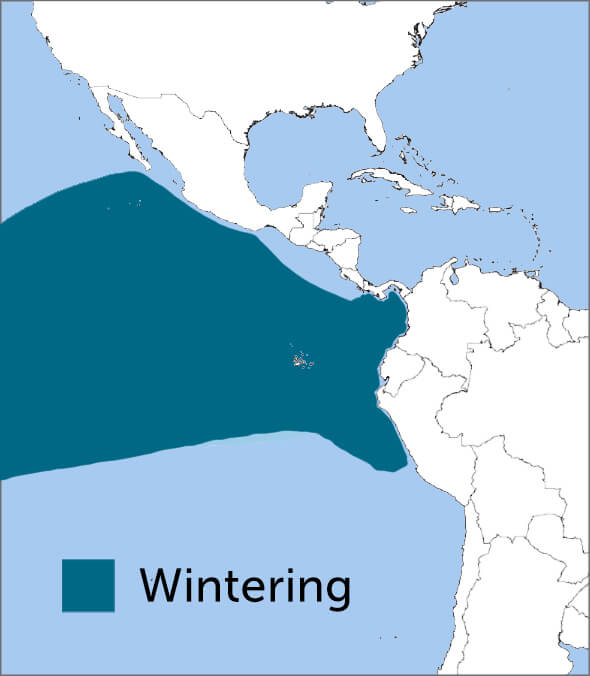
The Parkinson's Petrel breeds on just two small islands off New Zealand, Little Barrier and Great Barrier Islands. Outside of its breeding season, it disperses east across the vast Pacific Ocean, flying as far as the cold waters of the Humboldt Current off the west coast of South America. It has been recorded as far north as Mexico and California, but usually frequents waters off the coast of Peru and Ecuador, including the Galapagos Islands.
Conservation
The Parkinson's Petrel was extirpated from mainland New Zealand by introduced mammals such as cats and rats, which pose a continuing threat to the small population that remains. This seabird also faces threats from longline fishing and small artisanal fisheries off the South American coast, which may inadvertently hook and drown foraging birds.

Help support ABC's conservation mission!
In New Zealand, predator eradication measures on the Parkinson's Petrel's remaining breeding islands seem to have stabilized its numbers, although the International Union for Conservation of Nature (IUCN) still classifies this seabird as Vulnerable due to its low population.
ABC considers the Parkinson's Petrel a species of concern, and is collaborating with partners in Ecuador and Peru to reduce seabird bycatch in its artisanal longline and gillnet fisheries. See the Bird Hero feature on page 34 of our Summer 2024 magazine for a closer look at Giovanny Suárez Espín, ABC's Ecuador Seabird Bycatch Coordinator and his work to save seabirds.
Get Involved
Policies enacted by the U.S. Congress and federal agencies have a huge impact on seabirds. You can help shape these rules for the better by telling lawmakers to prioritize birds and bird-friendly measures. To get started, visit ABC's Action Center.
Plastics pose a deadly threat to seabirds around the world. You can help seabirds by reducing your daily use of plastics. To learn more and get started, visit our Plastics page.
American Bird Conservancy and partners are creating predator-free nest sites for vulnerable seabird species, reducing fishery impacts, and much more. This is a monumental undertaking, requiring the support of many, and you can help by making a gift today.





































